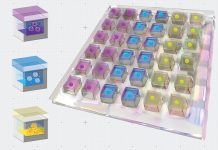
Doctors have long relied on familiar vital signs—heart rate, blood pressure, temperature, and oxygen levels—to monitor health.
But scientists at the University of Missouri (Mizzou) say one important clue has been missing: blood viscosity, which refers to how thick or sticky blood is as it flows through the body.
They’ve now developed a groundbreaking ultrasound technology that can measure this key property non-invasively and in real time—no blood draw required. The research was published in the Journal of Dynamic Systems, Measurement, and Control.
Blood viscosity quietly influences nearly every system in the body. When blood becomes too thick, it moves sluggishly, forcing the heart to work harder and increasing the risk of clots and tissue damage.
It has been linked to six of the ten leading causes of death in the U.S., including heart disease, cancer, and stroke.
“Blood pressure tells us what’s happening in the blood vessels, but it doesn’t tell us about the blood itself,” explained Dr. Nilesh Salvi, a research scientist at Mizzou’s College of Agriculture, Food and Natural Resources and the project’s lead author. “Viscosity could be that missing piece.”
The new device works by using ultrasound waves—the same type used in prenatal imaging—to gently vibrate the blood with a continuous sound signal.
Advanced algorithms then analyze how the sound travels through the bloodstream to calculate both its density and viscosity. This is the first time both properties can be measured simultaneously and non-invasively.
Interestingly, the technology’s roots aren’t in medicine. Salvi first developed the system while studying engineering at Mizzou to measure oil quality in engines.
He even launched a startup to monitor lubricants in real time. Later, with the guidance of Professor Jinglu Tan, an expert in chemical and biomedical engineering, Salvi realized the same sensing principles could apply to human health.
Seeing its potential, Dr. William Fay, a professor in Mizzou’s School of Medicine, helped the team explore medical applications.
“Measuring blood viscosity has always been a challenge,” Fay said. “Most hospitals don’t have the equipment to do it. This new device could be a game changer—it allows accurate, real-time readings without ever drawing blood.”
Unlike traditional lab tests, which remove blood from the body and can alter its natural behavior, this technology measures it directly inside the body—preserving its true condition. “Blood is a living organ,” Tan noted. “You can’t take it out and expect it to act the same way.”
The implications are far-reaching. The system could transform how doctors monitor conditions like sickle cell anemia, where abnormal blood cells increase viscosity and harm organs. Real-time measurements could help tailor treatments instantly.
Because the invention is largely software-based, it can run on affordable, portable equipment—and could even lead to wearable health monitors in the future. Salvi envisions a day when blood viscosity becomes a standard vital sign. “This isn’t just a new device,” he said. “It’s a new way of understanding the human body.”
If you care about health, please read studies that vitamin D can help reduce inflammation, and vitamin K could lower your heart disease risk by a third.
For more health information, please see recent studies about new way to halt excessive inflammation, and results showing foods that could cause inflammation.
Source: University of Missouri.



